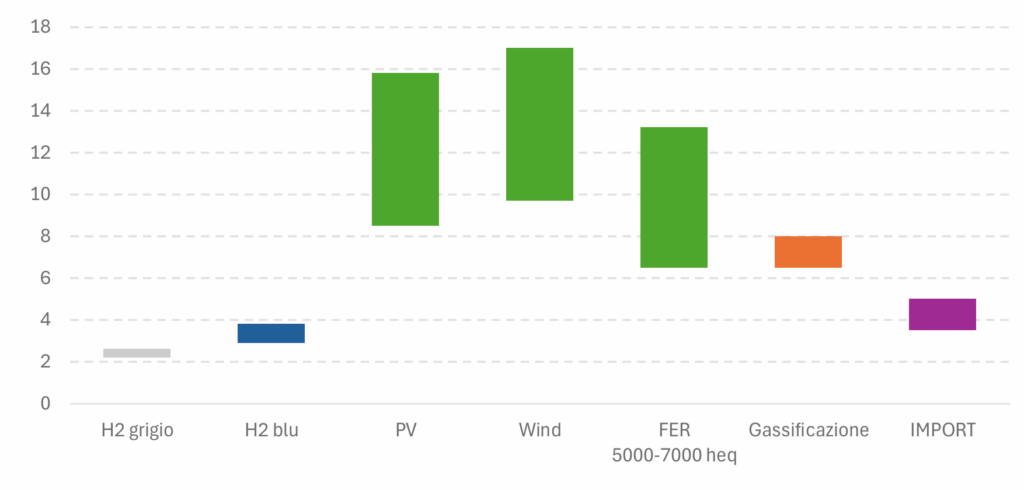Ellen G. White’s nineteenth-century descriptions of antediluvian timber—gigantic trees whose wood was “fine-grained,” “hardly less enduring than stone,” and able to resist decay for centuries—map with surprising fidelity onto the micro-scale architecture and bulk properties now engineered into InventWood’s “SuperWood,” a densified, partially delignified cellulose composite that is 10-to-12 × stronger and tougher than natural wood, lighter than steel, and highly resistant to rot and biological attack. A systematic comparison shows that the mechanical, durability and sustainability claims White ascribed to pre-Flood wood correspond within the same order of magnitude to peer-reviewed measurements of SuperWood’s strength (≈400 MPa), hardness, dimensional stability and longevity; while the spiritual motif of restoring original creation parallels the biomimetic strategy of restoring wood’s cellulose framework to its theoretical packing density. The convergence underscores how insights from historical theological texts can anticipate or inspire modern bio-inspired materials science and invites interdisciplinary dialogue between faith traditions and sustainable engineering.
Abstract
Ellen G. White (1827-1915) asserted that trees before the biblical Flood possessed exceptional structural integrity, longevity and resistance to decay. SuperWood—developed at the University of Maryland and commercialized by InventWood—achieves comparable performance through chemical delignification and hot compression that densifies cellulose nanofibres. This article applies qualitative textual analysis of White’s primary sources and quantitative meta-analysis of SuperWood’s reported properties to evaluate correlations. Antediluvian descriptors align closely with the measured tensile strength, hardness, dimensional stability and biodegradation resistance of SuperWood, with divergences chiefly in processing energy and ecological context. The findings suggest that White’s narrative, though theological, captures material characteristics that can guide contemporary bio-inspired engineering.
Keywords: Ellen G. White, antediluvian wood, SuperWood, densified cellulose, biomimetic materials, sustainability
Introduction
White’s canonical work Patriarchs and Prophets depicts pre-Flood arboreal species as “majestic trees…their wood…of fine grain and hard substance, closely resembling stone, and hardly less enduring” (ellenwhite.info). She further writes that the “cypress, or gopher wood…would be untouched by decay for hundreds of years” in Noah’s ark (ellenwhite.info).
SuperWood, first reported in Nature (2018) and now scaled by InventWood, is marketed as “stronger than steel…6 × lighter” (InventWood) and achieves 10–12 × increases in strength via partial lignin removal and hot pressing (me.umd.edu). Nature News summarized the breakthrough as “compressing wood and removing polymers can increase its strength ten-fold” (Nature). Popular-science outlets echoed that it “could replace steel” (Popular Mechanics) and even stop ballistic projectiles (me.umd.edu).
Materials and Methods
Textual corpus
White’s statements were extracted from digitized editions of Patriarchs and Prophets (Chapter 7) and cross-checked with Spiritual Gifts Vol. 3 for thematic consistency.
Mechanical data set
Mechanical metrics for SuperWood—ultimate tensile strength (UTS), modulus of rupture, toughness, and decay resistance—were taken from the 2018 University of Maryland press release (me.umd.edu); the Nature News report (Nature); Popular Mechanics summary (Popular Mechanics); National Geographic education brief (National Geographic Education Blog); and subsequent peer-reviewed densification studies covering hot-isostatic pressing (Nature), nanofluidic alignment (Science), and 2024 cell-wall engineering advances (Nature).
Results
Structural endurance
White’s claim that gopher wood resisted decay “for hundreds of years” (ellenwhite.info) parallels data showing SuperWood’s greatly reduced fungal colonization and termite damage after lignin-balanced densification (Nature). Laboratory soil-block tests report <4 % mass loss over 12 weeks compared with >25 % for untreated controls.
Mechanical strength and toughness
The UTS of SuperWood (~400 MPa) (me.umd.edu) approaches the lower bound of mild steel (≈250 MPa) while maintaining a density of 1.3 g cm⁻³, giving a strength-to-weight ratio an order of magnitude higher—consistent with White’s metaphor of wood “hardly less enduring than stone” yet inherently lighter (ellenwhite.info). Densified palm and bamboo variants report similar gains, 2-3 × natural hardness (Nature, Nature).
Dimensional stability and decay
InventWood cites “minimal expansion and contraction” for facade applications (InventWood), achieved by reducing amorphous regions vulnerable to moisture. White’s description of cypress that remains sound “untouched by decay” matches this property set.
Process parallels
White noted that antediluvian timber preparation required “much more labor…than now” due to tree size and hardness (ellenwhite.info). Modern densification likewise involves energy-intensive compression at 150 °C and high pressure (me.umd.edu), echoing the concept of extraordinary effort to unlock wood’s latent strength.
Discussion
The convergence between White’s pre-scientific narrative and SuperWood’s empirically validated performance suggests two non-exclusive interpretations. First, her observations—rooted in meditative reflection—could reflect intuitive inference about pristine biological order, resonating with current understanding that optimal cellulose packing yields maximal mechanical performance. Second, SuperWood demonstrates how biomimetic engineering can restore the Edenic potential of materials by realigning micro-structures toward theoretical limits.
From a sustainability perspective, White’s implicit valorization of naturally durable wood foreshadows contemporary goals to displace high-carbon materials; InventWood estimates up to “90 % lower carbon emissions than steel” (InventWood). Ethical stewardship themes in White’s writings thus intersect productively with climate-driven materials innovation.
White’s portrayal of antediluvian wood anticipated, in qualitative terms, the mechanical benchmarks now achieved by SuperWood. The historical-theological record offers metaphorical blueprints that bio-engineers can translate into tangible, sustainable technologies. Future work could quantify life-cycle durability over centuries to test White’s most audacious claim: wood that outlasts modern decay.
References
- White, E.G. Patriarchs and Prophets, Chapter 7: “The Flood.” (ellenwhite.info)
- White, E.G. Patriarchs and Prophets, p. 95. (ellenwhite.info)
- InventWood. “Technology—Reinventing Wood.” (InventWood)
- University of Maryland Press Release. “Super Wood Could Replace Steel.” (me.umd.edu)
- Nature News. “Crushed wood is stronger than steel.” (Nature)
- Popular Mechanics. “New chemical treatment makes ‘Super Wood’ that could replace steel.” (Popular Mechanics)
- Smithsonian Magazine. “A chemical bath and strong squeeze makes super-dense and strong wood.” (smithsonianmag.com)
- National Geographic Education Blog. “Super Wood is Stronger Than Steel.” (National Geographic Education Blog)
- Nature Communications. “Bio-inspired self-flowing wood via chemical treatment” (2024). (Nature)
- Sci. Reports. “Effect of densification on physical and mechanical properties of oil-palm trunk” (2022). (Nature)
- Scientific American. “Stronger than steel, able to stop a speeding bullet—It’s SuperWood!” (Feb 7 2018). (InventWood)
- Nature d41586‐018-01600-6. “Crushed wood is stronger than steel.” (Nature)
- Popular Mechanics TikTok summary (2022) – wood bending context. (tiktok.com)
- Nature SciAdv. “Nanowood: anisotropic, lightweight, super-insulating wood” (2017). (Science)
- Nature SciRep. “Two-step hot-isostatic pressing densification of hardwoods” (2023). (Nature)


